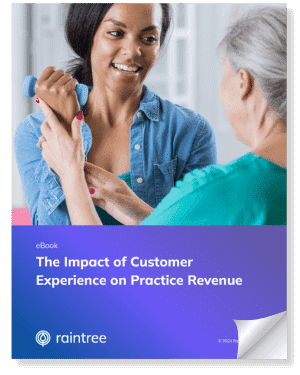
Digital technology is evolving fast, and with it, the healthcare industry is undergoing unprecedented transformation. As a provider, you now have to cater to a growing population of tech-savvy clients who prefer electronic interactions over paperwork.
This shift makes sense since patients are now accustomed to the flexibility and convenience of engaging with every type of business online or through their mobile phones 24/7.
However, to keep up with evolving patient expectations as well as deliver outstanding care, you must stay on top of emerging digital technology trends in 2024. Let’s explore the potential of a few classic tools to help solve modern challenges, starting with patient portals and business intelligence (BI).
The Benefits of a Patient Portal
In the past, the only way for patients to reach providers was through a phone call, which meant making contact during business hours, long waits on hold and frustrating rounds of phone tag. Sometimes, these inefficient communications deterred people from reaching out and would make patients feel unsupported or confused about the next step in their plan of care. However, thanks to advanced technology, healthcare providers can now take a more proactive and holistic approach to improving patient outcomes.
For providers, robust patient portal software can streamline many essential operations and deliver a higher-quality patient experience. From scheduling the first visit to automating appointment reminders to revenue cycle management, patient portals or dashboards can keep you consistently in touch through every step of their journey. Patient portals can also alleviate the administrative burden on your team members while still increasing patient engagement.
Simplicity and Accessibility
The healthcare world is complicated as it is, so the use of disconnected systems can prove extremely inconvenient. That’s why providers need robust technology to help reduce manual hand-offs and broken workflows. Through a patient portal, you can automate engagement such as email blasts, survey campaigns, clinical questionnaires or other forms of support and make it easy for patients to have all the information they need to collaboratively manage their health.
Today, healthcare consumers expect easy-to-use services that are made available at any time and can be accessible anywhere. For example, mobile phone applications, text reminders, voice messages, emails and videos are all more accessible than paperwork.
Privacy and Patient Safety
With the digitalization of healthcare experiences and adoption of electronic medical records (EMR), new cyber security risks as well as issues with patient privacy have emerged. Keeping this in mind, the technology your practice chooses should have state-of-the-art security that protects the integrity of patient records and prevents unauthorized access by hackers or imposters.
What’s more, your solutions should make patient information and clinical data readily accessible to providers in order to ensure effective treatment. Additionally, the risk of severe medical harm is high when providers don’t have adequate information about the patient’s history, often because of fragmented medical records.
In fact, according to research published in the Harvard Business Review, an estimated 680 people in the U.S. die each day due to preventable issues, making medical errors the third leading cause of death. Fortunately, technology can help easily solve this pervasive problem and improve patient safety.
Better Communication Helps Patients Take Charge Of Their Lives
By boosting engagement with your patients, you can encourage them to take charge of their own health and foster relationships that enhance satisfaction as well as increase client retention. As a result, more people will return for routine care and stay on track with their treatment plans.
Additionally, you can disseminate healthcare and disease prevention information to relevant groups, so that they feel empowered to pursue healthier lifestyle choices. Another advantage you gain through a robust communication approach is the opportunity to solicit and act on patient feedback. This will improve how your practice operates and aim to deliver continually higher standards of care.
Important Questions To Ask When Choosing BI Software
Today, business intelligence (BI) is central to many healthcare technology applications. BI can identify trends or patterns in data to alert providers of health concerns that may need prompt attention. Furthermore, BI can help you improve patient engagement by monitoring clinical outcomes and using those insights to guide treatment planning. You can also use BI to analyze financial and operational data to enhance the business side of your practice.
Although BI is quickly becoming a mainstay in healthcare, you may not know what to seek in a BI solution for your practice. Here’s what to ask first:
- What are your customers’ needs, wants, preferences and behaviors? If you are unsure, consider engaging them in conversations or engagement campaigns to find out.
- How can you implement BI in a way that will support existing workflows? Therapists and providers can often become overwhelmed with burnout, so any new technology you deploy should have their workflows in mind. However, if you need to reinvent these workflows, start by understanding the current state and envisioning the ideal future result or goal, then use technology to propel you from point A to point B.
We are heading into an era where almost every aspect of our daily lives will involve digital technology and that includes patient/provider relationships. To stay up to date with changes in the industry, every practice needs advanced solutions that foster improved patient engagement while supporting the ongoing delivery of high-quality care.
Patient Engagement Tools for Rehabilitation Therapy
No matter the specialty, as your practice grows, you can rely on Raintree’s all-in-one platform to manage critical aspects of your business, from patient management to analytics to billing and collections. Get in touch with us to find out more.
Read the eBook:
The Impact of Customer Experience on Practice Revenue
